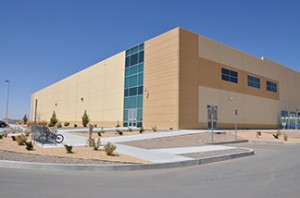Toner News Mobile › Forums › Toner News Main Forums › Lexmark's Recycling Plant in Juarez Mexico Process 30,000 Empties
- This topic has 0 replies, 1 voice, and was last updated 8 years, 9 months ago by
news.
-
AuthorPosts
-
newsKeymasterhttp://www.forbes.com/sites/stevebanker/2015/06/23/reducing-supply-chain-waste-streams-profitably/
Lexmark's Recycling Plant in Juarez Mexico Process 30,000 Empty Toner Cartridges Per Day.
70% of Europe's Empty Cartridges Are Returned To Lexmark.
Reducing Supply Chain Waste Streams Profitably
By Steve Banker.
Last week, Shauna Leis, Senior Manager for Global Supply Chain Operations at Lexmark, spoke at the eft (formerly eyefortransport) conference. Lexmark is best known as a provider of printing and imaging products, although they also provide content management solutions. Shauna is responsible for operations support across Lexmark’s printer cartridge collection program.Lexmark is extremely proud of their corporate social responsibility (CSR) programs; and the company has won several awards for their efforts in CSR. But in Shauna’s area, good corporate citizenship has also meant lower supply chain costs and increased competiveness. In writing this article, I have combined information from Shauna’s speech, with information from their CSR webpage, and a webpage describing their cartridge collection program.
At Lexmark, they have committed to disposing of waste in a safe and responsible manner. Their facilities measure and report on the waste they have generated and their progress in waste-reduction.
For the printer cartridge products, the company’s goal is to have a zero landfill impact based upon getting back the products they have sold, chopping them up, and reusing materials, or in the case of printer cartridges, remanufacturing them. To reach zero landfill and incineration impacts, reduction targets go hand in hand with recycling programs and reuse targets.
Recycling is based on a cartridge collection program which provides free customer return methods. Customers put the old cartridge in the packaging and shipping box that the new cartridge came in. The box even includes a shipping label.
Once they get cartridges back the goal is to recycle those products. The company has a goal to reach a 25% average post-consumer recycled (PCR) plastic content for their entire toner cartridge line by 2016. Today, their toner cartridge product line contains, on average, 10% by weight PCR content, so Lexmark has work to do to meet their goal.
Lexmark gets their own returned cartridges back, as well as cartridges from competitors who have similar programs. The team at their recycling plant in Juarez Mexico sorts the cartridges by manufacturer, use, and even by customer. Cartridges from other companies are swapped for their own returned cartridges. Juarez processes approximately 30,000 empty toner returned cartridges per day. These cartridges go through rigorous quality inspections, and select components in the empty cartridges are removed and reprocessed for reuse.
Shauna described the developer roll, the metal roller sheathed by rubber which applies the toner, as the heart of the printer. But these rollers were hard to reuse and they use to be sent to a smelter because of the difficulty to removing the toner. But recently, they have had a manufacturing engineering break through. They’ve developed a method for taking the developer rolls, washing them, and reapplying new toner. This has led to 40,000 fewer pounds of metal being sent to the smelter and a company savings of 1.2 million dollars.
Meanwhile, Lexmark has found a new use for the used toner that is gathered through remanufacturing. They ship it to a company that uses it as a raw material for asphalt.
In Europe, Lexmark 70 percent of the cartridges are returned. In the US, it is about a 65 percent return rate.
The cartridges are returned, in some cases, because of altruistic business consumers. Life Cycle Assessment studies conducted by a third party firm show that by sending a used Lexmark toner cartridge back for recycling, as opposed to discarding it in a landfill, a cartridge’s overall carbon footprint is reduced by up to 50%.
In other cases, their customers have their own CSR targets and using remanufactured products helps them meet goals they have set for themselves.
Finally, the remanufactured products are less expensive, about $8 less expensive (25 percent less than the cost for a new product) for one popular product. This has become a major product line. For this product line, good corporate citizenship has also meant lower costs and increased sales.
-
AuthorJuly 16, 2015 at 12:45 PM
- You must be logged in to reply to this topic.


